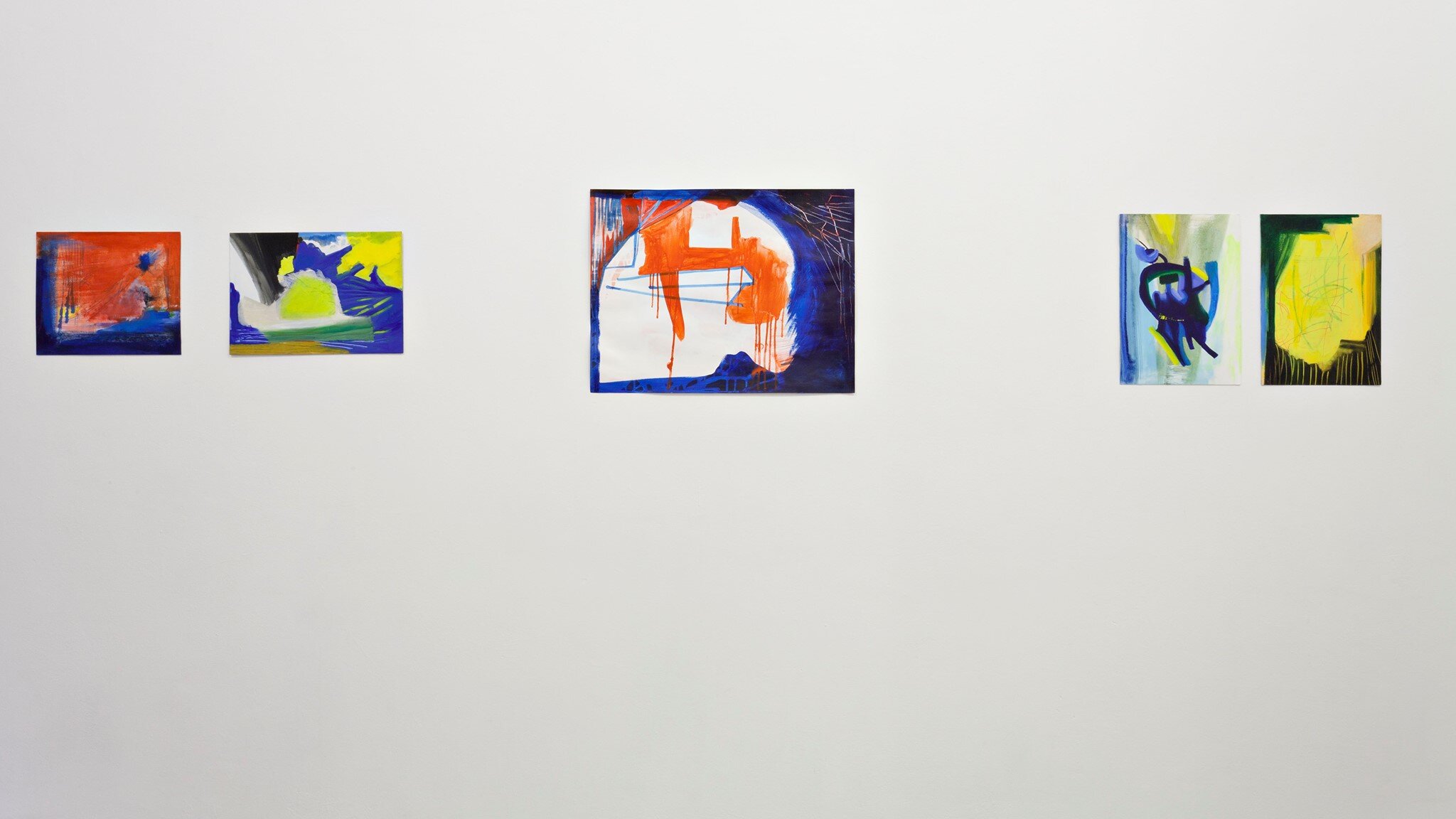Monsoon: Solo Exhibition by Adi Argov
May-June 2019, Nulobaz Cooperative Art Space, Tel Aviv | Text
Installation photos by Rami Tsalka
“I believe,” he once said, “that the petal of a flower or a tiny worm on the path says far more, contains far more than all the books in the library. One cannot say very much with mere letters and words. Sometimes I’ll be writing a Greek letter, a theta or an omega, and tilt my pen just the slightest bit; suddenly the letter has a tail and becomes a fish; in a second it evokes all the streams and rivers of the world, all that is cool and humid, Homer’s sea and the waters on which Saint Peter wandered; or it becomes a bird, flaps its tail, shakes out its feathers, puffs itself up, laughs, flies away. You probably don’t appreciate letters like that very much, do you, Narcissus? But I say: with them God wrote the world."
Hermann Hesse, “Narcissus and Goldmund"
After reading “Narcissus and Goldmund” upon Adi’s recommendation, I immediately realized why Adi, who encountered this book in her early years at Bezalel Art Academy, considers this novel to leave the most significant impressions on her. Through Adi, I have learned about the two opposing forces co-existing within her in a constant daily struggle, one that is powerfully reflected in her works. These forces are the spirit or the intellect (represented by Narcissus), and the matter or the intuition (represented by Goldmund).
Intellectual unrest, combined with endless curiosity about the essence of her works, to a large extent characterizes Adi. I myself often struggle with the question of how, in this day and age, one can advocate a practice of drawing and painting which is mainly based on abstraction? Aren’t there more “pressing” issues to tend to, for example, ecological and social urgencies, to name just two? Probably yes. However, the human soul and its need for unconditional, emotional and sensory sustenance, are of no less importance.
In this context, it seems appropriate to mention “Abstraction and Empathy”, a fascinating essay written by the German art historian Wilhelm Worringer in 1908. Worringer argued that the style of a given era was determined by the human need for abstraction to achieve aesthetic pleasure. At times when mankind had lived in peace with the outside world and its phenomena (for example the Renaissance period, during which a new desire to study and explain nature and the universe had evoked), it derived great pleasure from the world’s organic existence and its naturalistic representation in art. On the other hand, the tendency for abstraction in art is found in times when mankind feels anxious and restless in front of the randomness and arbitrariness that characterize its world. At such times, one seeks peace of mind in “trustworthy,” absolute and irrefutable forms.
Adi’s artistic starting points are the line and the drawing. I once heard renowned Israeli painter Yair Grabuz say that “drawing is a path, a journey. The line leads us – and it is always to someplace we have never been before.” This is the approach one should take when looking at Adi’s drawings. For her, it is almost a daily act: sketches and intuitive experiments drawn with no previous design or plan, with pens or markers in her sketchbook, or on papers of various sizes. At a certain point in the process, which Adi calls “at a spark of probability”, suddenly it pours out and the lines begin to “look like something”. This can be a figurative allusion, or simply the beginning of a noticeable tension, resulting from the lines’ intersections, their location, course, and thickness.
During the past two years, Adi has focused her attention on converting her practice of drawing into additional mediums, primarily painting. She did it by extracting formal or conceptual formulations found in her drawings’ composition and transferring them into paintings on various surfaces using a variety of materials. Such transformation involves an additional level of abstraction which further neglects any figurative allusions, to the point where nothing remains but linear gestures imposed on an expressive, abstract painting.
Another intriguing aspect in Adi’s works is that they do not take themselves too seriously. Adi draws and paints in gestures she considers as “slapstick”. Her works can be perceived as obtaining a quality termed by Italian novelist Italo Calvino as “weightless gravity”. In his book ״Six Memos for the Next Millennium״, Calvino writes:
“We might say that throughout the centuries two opposite tendencies have competed in literature: one tries to make language into a weightless element that hovers above things like a cloud […]. The other tries to give language the weight, density, and concreteness of things, bodies, and sensations.”
Adi’s works always involve this delicate balance, when saturated staining meets frantic energetic scribbles, which, in turn, are met with confident, geometric and linear gestures. Similarly, the exhibition title Monsoon reflects not only the blues, yellows and greys portrayed in the works on view. Warm summer winds, interacting with heavy, stormy monsoon rains, represent for Adi an intuitive-intellectual duality that constitutes a significant creative urge manifested in her works, which can be positioned in different locations along a spectrum of abstraction and material complexity. Tracing back to the spirit of Worringer in “Abstraction and Empathy”, it can be said that Adi’s work serves her as a haven amidst the chaos of life.









